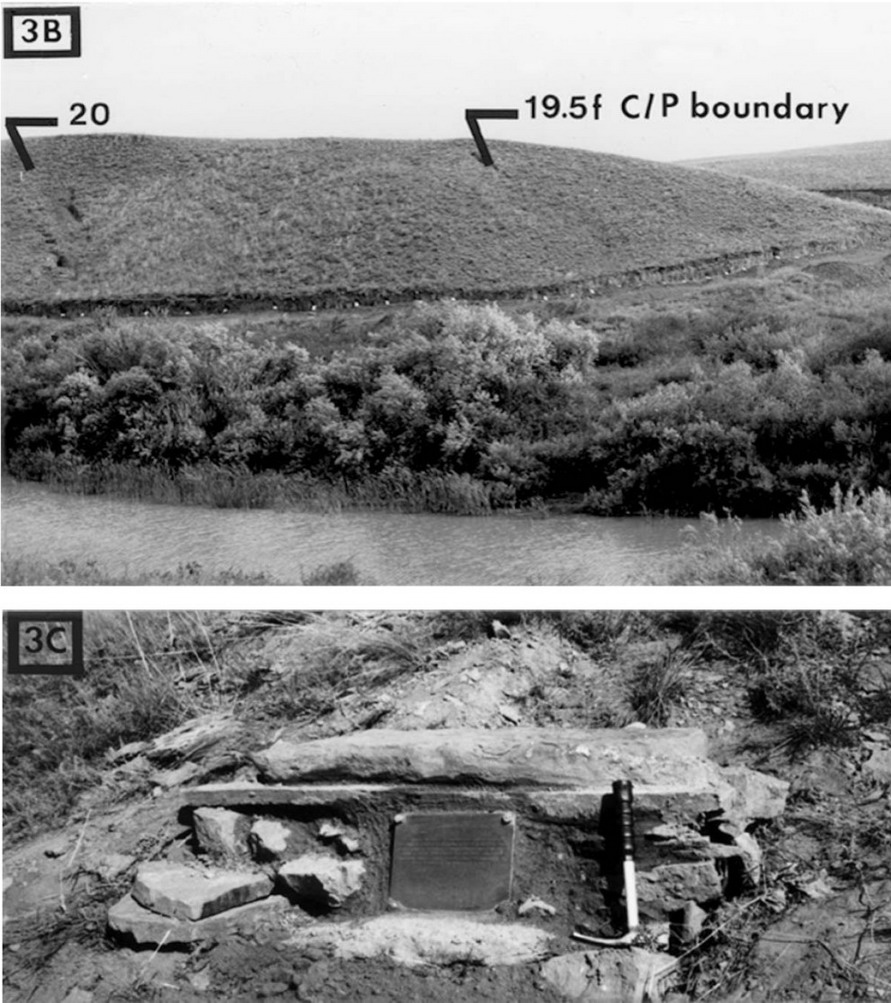Asselian Stage
The base of the Permian System was originally defined (Murchison, 1841) in the Ural Mountains of Russia to coincide with strata marking the initiation of evaporate deposition, now recognized as the Kungurian Stage. Since that time, the base has been lowered repeatedly to include a succession of faunas with post-Carboniferous affinities. The GSSP for the base of the Permian and basal Cisuralian Asselian Stage has been ratified by the International Union of Geological Sciences (IUGS) at Aidaralash Creek, Aktöbe (formerly Aktyubinsk) region, northern Kazakhstan in 1996. It is defined by the first occurrence of the conodont Streptognathodus isolatus in the S. wabaunsensis chronocline. This level closely approximates the traditional boundary definitions based on ammonoid cephalopods and fusulinacean foraminifers. The latest age of C/P boundary based CA-TIMS dating is 298.7±0.15 Ma.
The Aidaralash Creek section is located in the Aktöbe (formerly Aktyubinsk) region of the southern Ural Mountains of northern Kazakhstan, approximately 50 km southeast of the city of Aktöbe. The stratigraphic section is characterized by an uninterrupted succession of strata across the C/P boundary that contain abundant and well-preserved conodont, ammonoid, and fusulinacean faunas. Associated microfossils, such as radiolarians, small foraminifers, and palynomorphs provide additional important bases for correlation, and paleomagnetics were investigated. A stone and concrete marker with a plaque has been erected at the Aidaralash Creek section, Aktyubinsk (currently Aktöbe) marking the geographic and stratigraphic location of the GSSP. An agreement has been reached with the Aktöbe Regional Geological Survey of Kazakhstan through Efim I. Exposure and accessibility are adequate and both are maintained by the Aktöbe Regional Geological Survey of Kazakhstan. Future access will be guaranteed by means of legislative action to create a scientific preserve.










